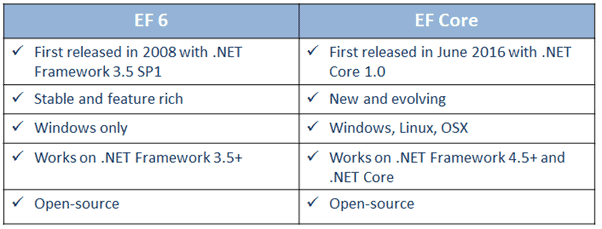
When using the Entity Framework as a data layer, the domain model expression is performed through POCO objects (Plain Old CLR Objects). I would appreciate your support in this way! Entity Framework Core Basics I may make a commission if you buy the components through these links. Entity Framework Core or EF Core also provides a simple mechanism to use SQL when needed – for performance reasons or just for convenience. Another benefit was LINQ support, used to efficiently build model queries by expressing meaningful queries in C# code. The system was relatively lightweight and easier to expand compared to previous versions of Entity Framework EF. The choice between ORM and micro-ORM ultimately depends on the team and the tasks you are trying to solve. The main difference between a micro-ORM and a full-fledged ORM framework (such as the Entity Framework Core) is that a micro-ORM usually requires you to manually enter executable SQL commands, and ORMs generate most of the SQL commands for you based on the information about the entities and the base data. Both frameworks are open source and community driven, but at the time of this writing, only Dapper has support for. Dapper is a popular “ micro ORM” framework and nHibernate is a fully featured ORM framework. Entity Framework Core or EF Core isn’t the only ORM technology available for. Entity Framework Core or EF Core is classified as an Object Relational Mapper ( ORM) this means you get rid of the complexities of transforming data from relational storage and your application’s object-oriented domain model.


This particular Entity framework is the recommended framework for building ASP.NET Core applications. There are not many solutions that give rise to such polar opinions as the choice of technology and methodology for storing and retrieving data in applications.Įntity Framework (EF) Core is the latest data technology created by the ASP.NET development team.

NET technologies have emerged that make this task easier. This includes reading data from the data store, tracking changes, and saving changes to the same data store.
#Ef core command line code
Not surprisingly, a fairly large percentage of application code usually deals with storing and retrieving data.
#Ef core command line update
Using migrations to create and update databases:Įntity Framework Core or EF Core C#, Overview:Įntity Framework Core “EF Core” C#- It’s safe to say that data is the most valuable aspect of a business application.Saving data using entity framework core:.Entity Framework Core or EF Core C#, Overview:.


 0 kommentar(er)
0 kommentar(er)
